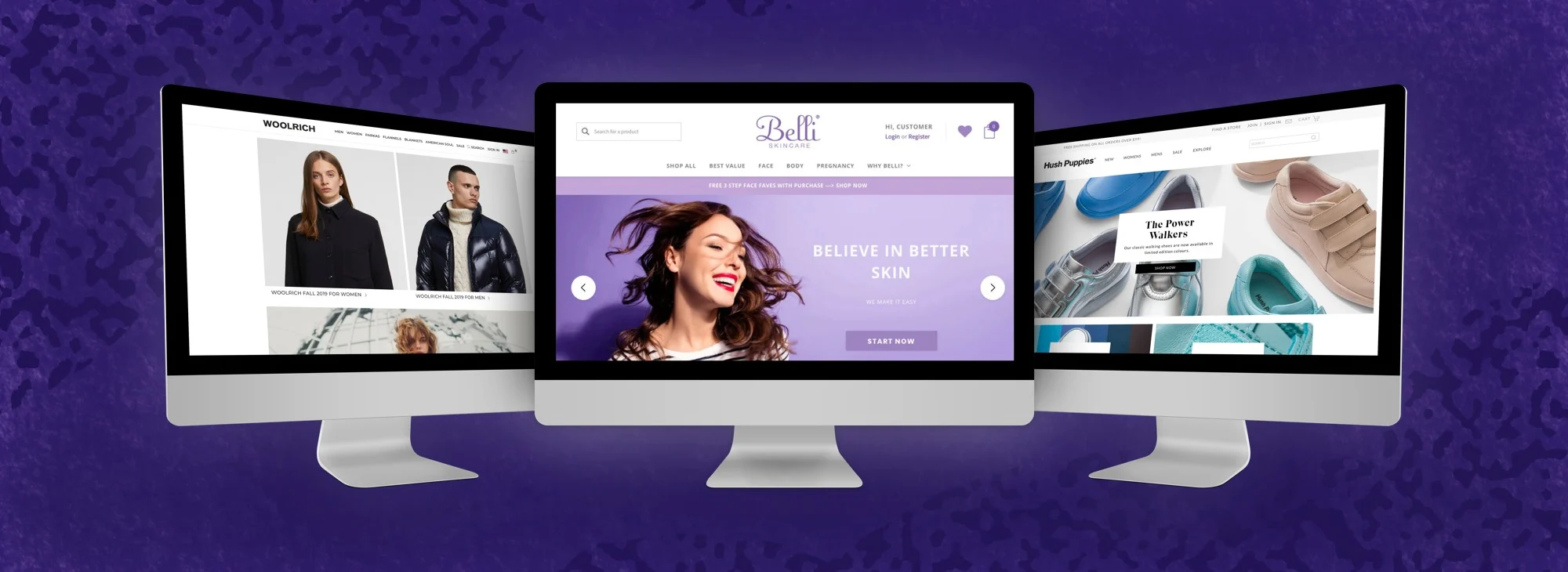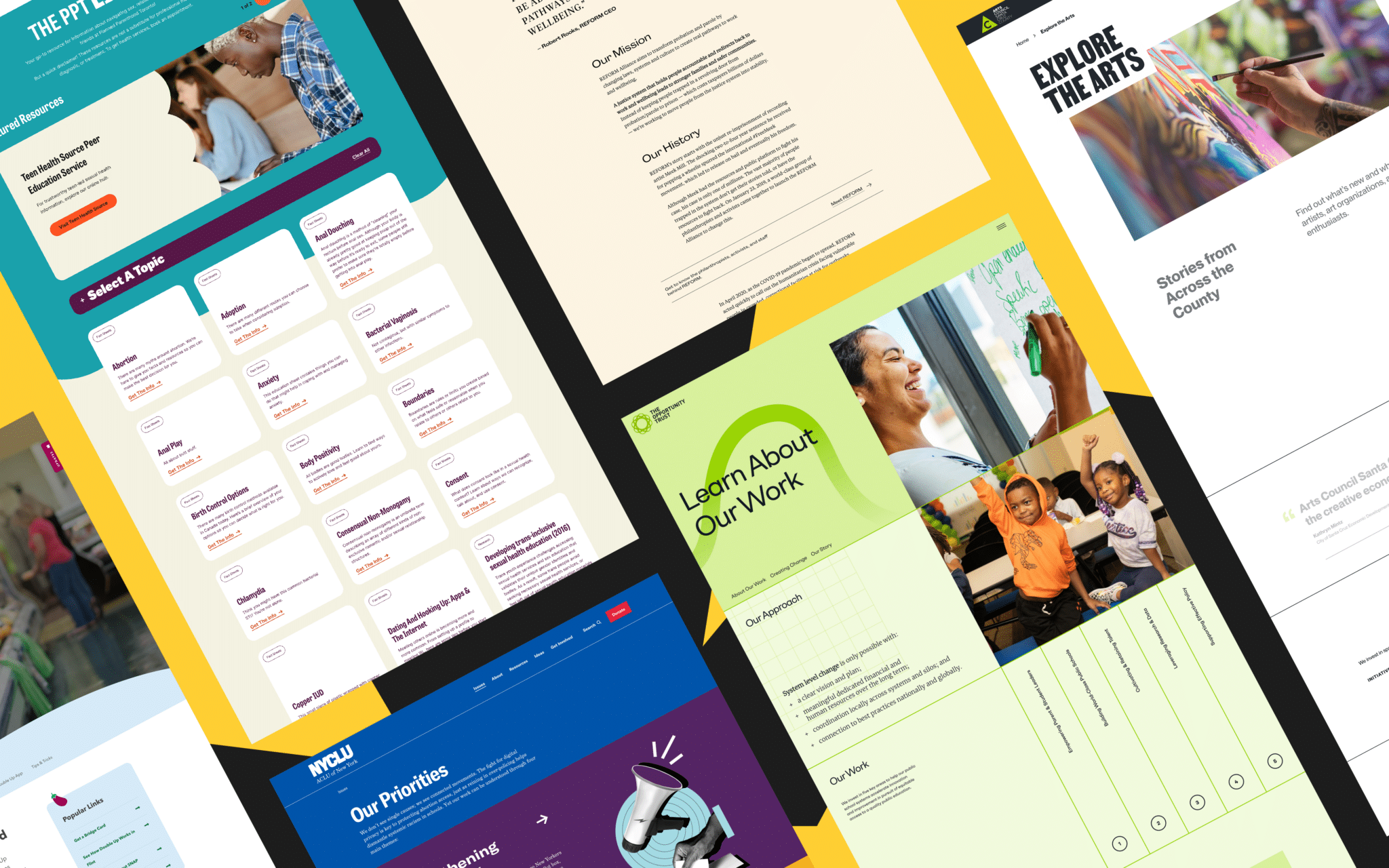Modern Internet Site Style That Captures Interest and Converts
In a significantly electronic landscape, modern web site design has actually emerged as a critical variable in capturing individual interest and driving conversions. By purposefully employing visual hierarchy, receptive layouts, and involving interactive elements, developers can create experiences that not just attract site visitors yet also facilitate meaningful communications. Furthermore, efficient call-to-action approaches play an important role in guiding individuals toward preferred results. As we check out these necessary elements, it becomes clear that recognizing their interplay can dramatically affect an internet site's performance and customer satisfaction. What are the crucial elements that truly make a difference?
Value of Visual Hierarchy
Visual power structure is an important component in web site design, as it overviews users' interest and boosts their general experience. By tactically arranging content, developers can direct individuals to one of the most crucial info initially, consequently increasing involvement and improving functionality. Effective aesthetic pecking order utilizes numerous strategies, consisting of size, comparison, spacing, and shade. Bigger elements normally attract the eye, while contrasting colors can stress vital messages, making them stand out amongst more subdued parts.
Including a sensible circulation in content plan is necessary; for instance, positioning the most important info on top of a page promotes instant acknowledgment. Consistent usage of typography, such as varying font sizes and designs, assists establish a clear web content structure. This organization not only help in navigation but likewise constructs count on, as individuals really feel extra comfy when they can conveniently find what they are searching for.
Ultimately, a well-executed aesthetic hierarchy not just improves aesthetic appeal however also substantially affects user actions. By prioritizing essential elements and ensuring a seamless experience, designers can efficiently convert site visitors into customers, reinforcing the value of this fundamental layout concept in contemporary site development.
Responsive Style for All Tools
Developing a seamless experience throughout different gadgets is essential in today's electronic landscape, where individuals gain access to sites from tablets, desktop computers, and smart devices alike. Responsive layout is an important method that guarantees web sites adapt fluidly to various display alignments, sizes, and resolutions. By using flexible grids, images, and CSS media inquiries, developers can produce layouts that maintain visual integrity and capability, despite the gadget being made use of.
The importance of responsive design prolongs past looks; it straight affects individual engagement and conversion prices. A web site that functions well on all devices motivates longer brows through and lowers bounce rates, as customers are more probable to connect with content that is easy to navigate. Moreover, search engines, particularly Google, focus on mobile-friendly sites in their positions, making receptive style a vital component of search engine optimization (SEO)
Including responsive layout not only enhances customer experience but also simplifies the advancement process. By creating a single site that functions throughout tools, businesses can save time and sources compared to creating different mobile and desktop variations. Inevitably, receptive layout is a fundamental approach for contemporary site design, guaranteeing access and satisfaction for all individuals, regardless of their gadget.
Engaging Interactive Aspects
While a receptive design lays the groundwork for a practical website, integrating interesting interactive components is crucial for catching individual interest and fostering much deeper links. Website Design. Interactive elements, such as animations, quizzes, and clickable infographics, create a more dynamic user experience, encouraging visitors to invest even more time on the website
Integrating interactive features can also guide users through complex details, making it simpler to absorb material. Interactive sliders can illustrate product variants, while ingrained video clips can give demonstrations or endorsements that resonate more than fixed pictures or text. Furthermore, gamification techniques, like incentives for engaging or finishing tasks with web content, can boost user motivation and retention.
Efficient use interactive aspects not only improves the individual experience however can additionally cause higher conversion rates. By making communications interesting and enjoyable, businesses can cultivate a feeling of commitment and trust fund with their target market. However, it is vital to balance interactivity with performance; extremely intricate functions might hinder website rate, negatively impacting individual satisfaction. Eventually, integrating well-designed interactive elements can considerably raise a site's efficacy, driving involvement and conversions in today's affordable digital news landscape.
Structured Navigation Practices
Reliable navigating is a keystone of any successful site, as it straight affects individual experience and material access. Streamlined navigation techniques make certain that users can quickly find information, boosting their communication with the site. A well-structured navigating menu need to be intuitive and easy, generally featuring a restricted number of primary groups to avoid frustrating visitors.
To attain structured navigating, designers should prioritize a hierarchical framework that realistically arranges web content. Executing breadcrumb trails can offer customers with context concerning their important source current area within the site, enabling for smooth backtracking. Furthermore, utilizing drop-down menus can properly preserve space while still supplying access to subcategories.
Responsive design is crucial, as navigation ought to be useful across all devices (Website Design). Mobile customers, specifically, take advantage of touch-friendly menus and collapsible sections that preserve use without compromising looks

Efficient Call-to-Action Strategies
A well-crafted call-to-action (CTA) is crucial for leading individuals toward wanted results on a web site, as it urges them to involve with material or buy. To maximize their efficiency, CTAs need to be clear, engaging, and purposefully positioned throughout the website.
First, use action-oriented language that communicates necessity or value, such as "Begin," "Sign up with Currently," or "Case Your Discount rate." This language not only motivates users yet also sets clear assumptions about the next steps.
2nd, think about design elements; CTAs need to stand apart aesthetically with contrasting colors, enough whitespace, and popular positioning. A switch that is simple to see and click boosts the likelihood of customer interaction.
Additionally, personalizing CTAs based upon customer habits or demographics can considerably improve interaction. Customized messages resonate a lot more with customers, driving greater conversion prices.

Final Thought
These parts collectively enhance customer experience, making certain that site visitors stay involved and encouraged to discover material additionally. By prioritizing these design concepts, companies can dramatically improve user retention and conversion rates, inevitably leading to better success in the digital landscape.
In a progressively electronic landscape, contemporary internet site design has actually arised as a crucial factor in catching individual focus and driving conversions.Visual power structure is an important component in website design, as it overviews individuals' attention and improves their total experience.The importance of responsive layout extends past aesthetics; it directly affects individual involvement and conversion rates.Incorporating receptive layout not just boosts customer experience but likewise enhances the advancement procedure. Eventually, receptive design is an essential method for modern website design, ensuring access and contentment for all individuals, regardless of their device.